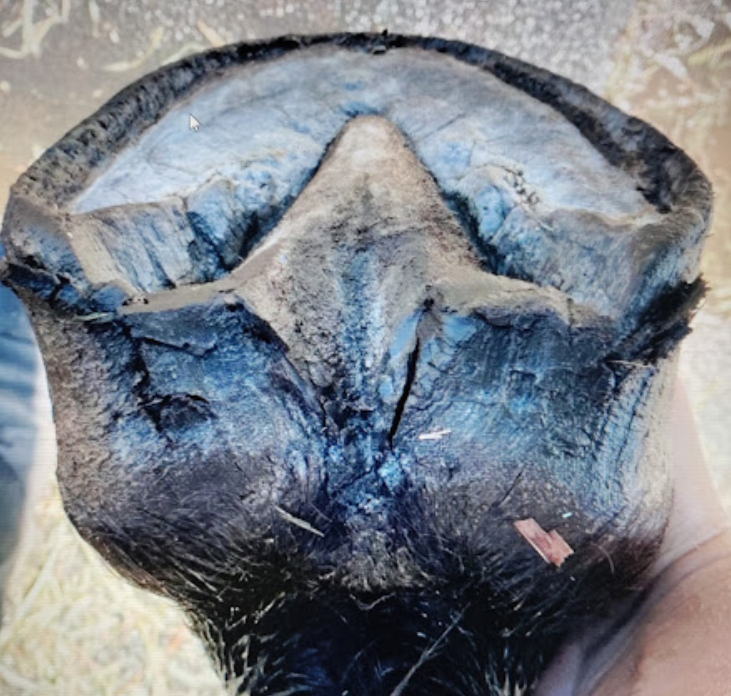This horse came to me with flat frogs that had only a hint central sulcus. As his feet have restored his frogs have gone through cyclic changes with the central sulcus going back and forth between somewhat open to pinched. In April of 2021 I saw indication on this frog that this cycle was coming to an end* on this foot, with the hope of his feet being restored to full size and balance a real possibility. They’re not there yet. But stay tuned.
*May 2025 edit: The cycle was, as it turns out, just ramping up. They’re still not fully restored, but they’re so very much better. Better looking to me, and better feeling, as per the gentleman himself.
This is where this foot started, or at least…where it was when he came to me just coming six.

His soles were hard and dark grey, and very thin. His frogs were hard and dark grey as well. He was walking on his perioples and hairlines at the caudal ends of his feet were all on the ground. He was uncomfortable on all but soft pasture. His hamstrings were rock hard, and his stance was camped under. I’d noticed too that when he walked, he would not extend his hind legs past vertical, always walking under himself in back.
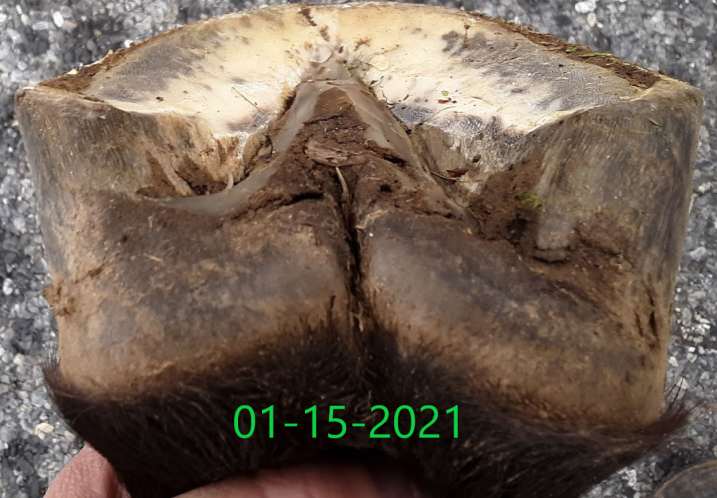
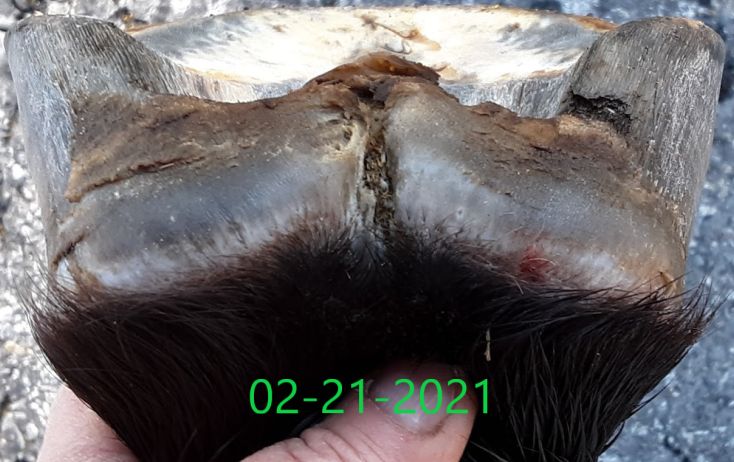
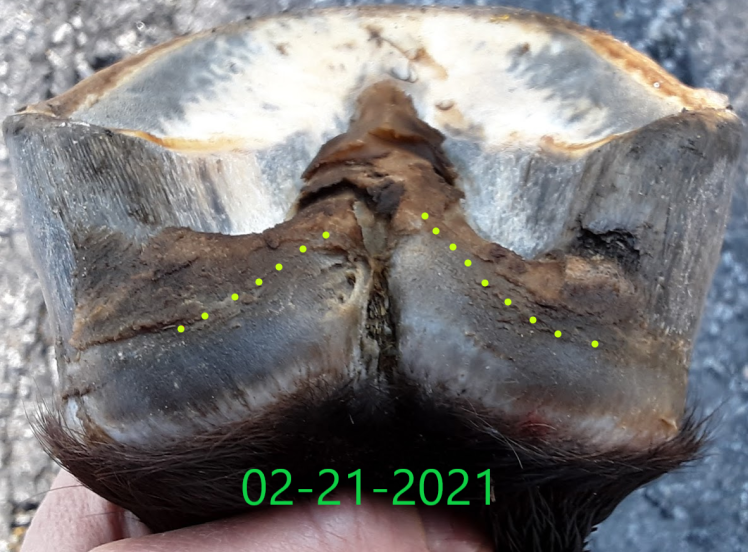



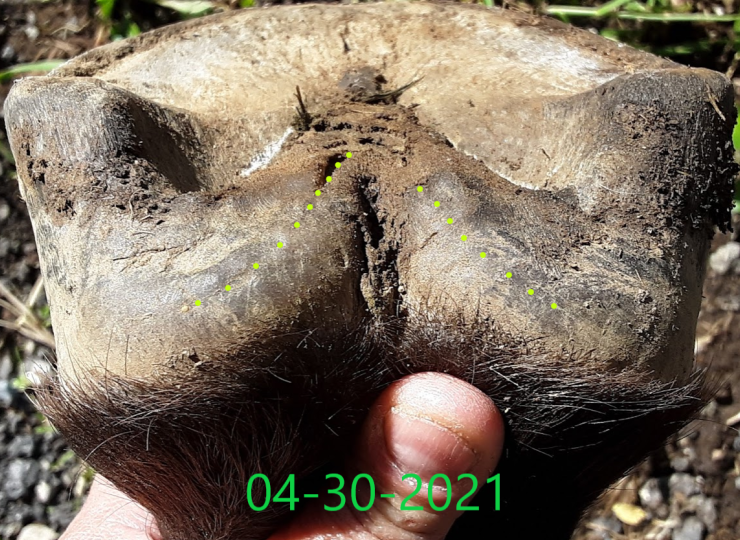

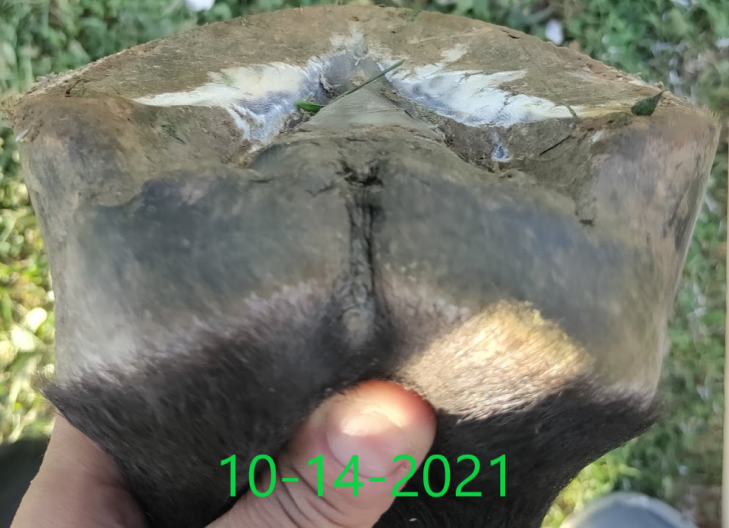
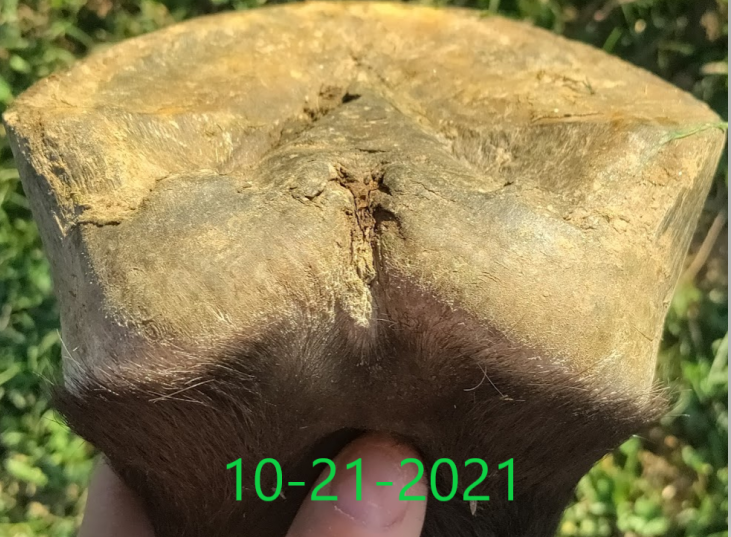
You can trace the growth lines in the periople around the back of the foot up around the front of that false central sulcus. It’s not totally unlike watching a hot air balloon unfurl.
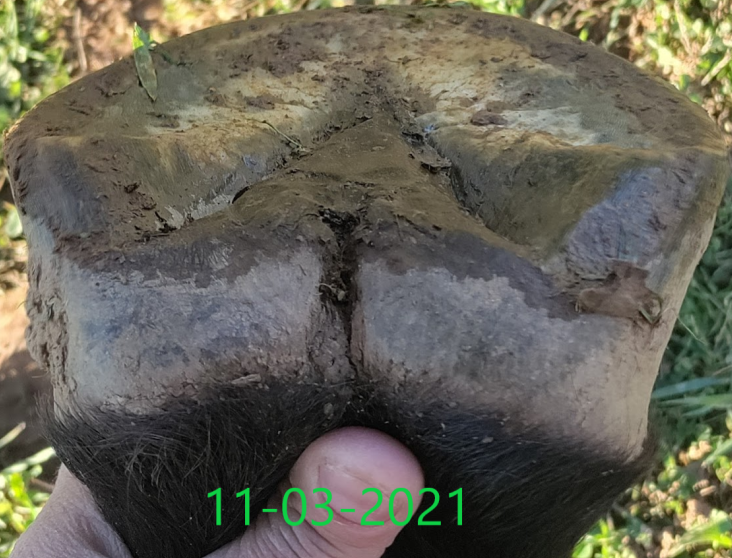


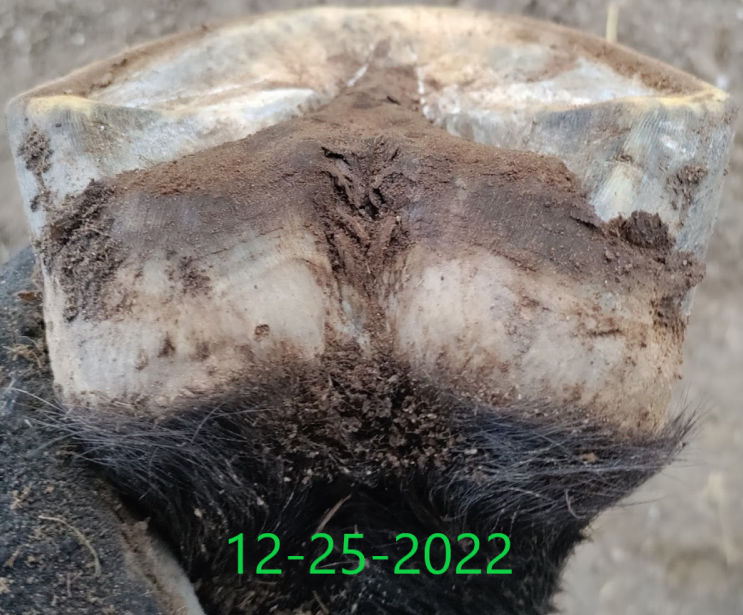
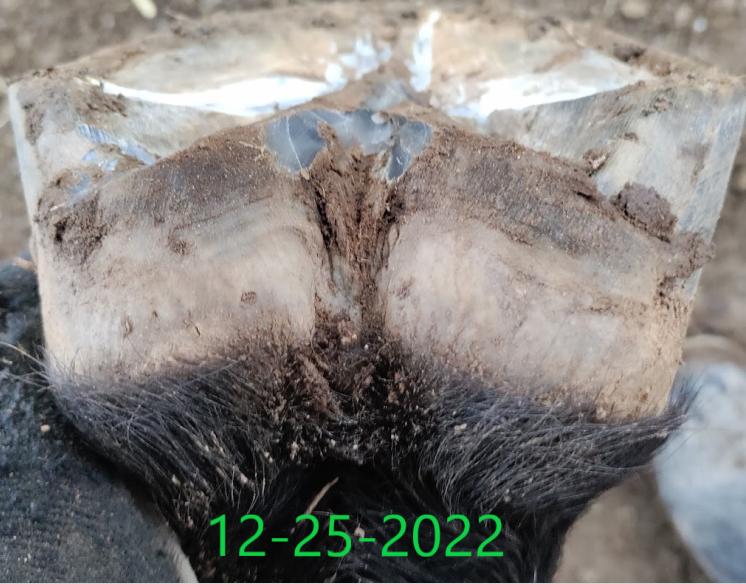
This was the last time I trimmed anything away from the central sulcus. I wanted to watch to see how it would change without intervention.
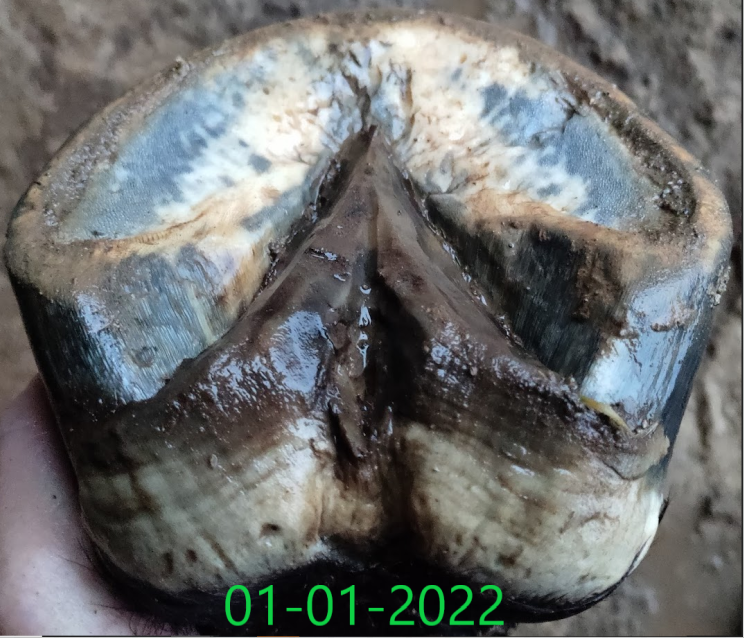
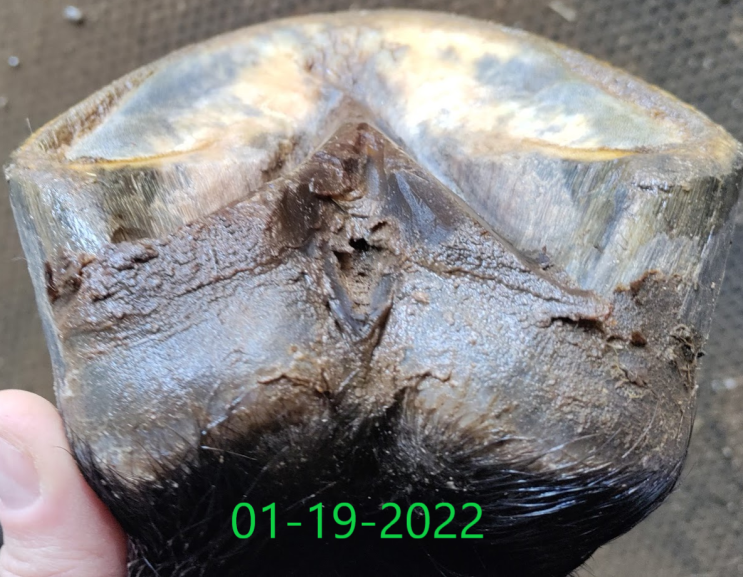
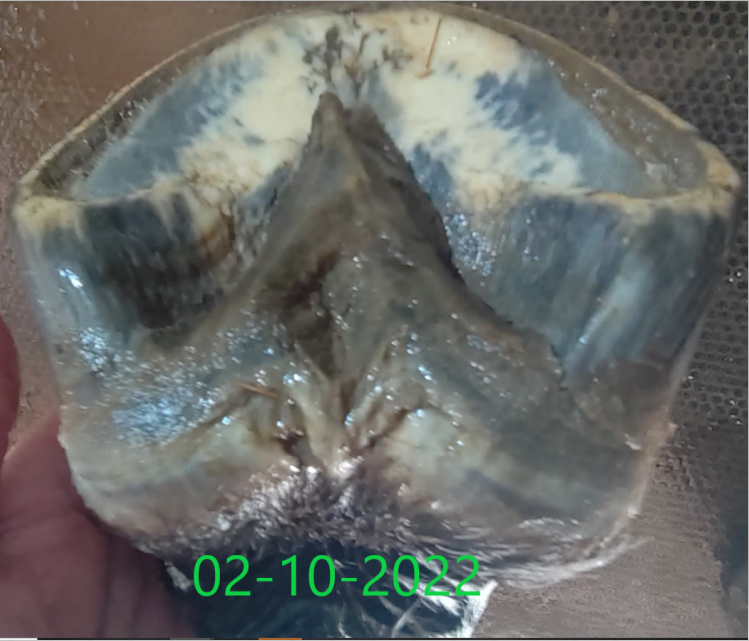
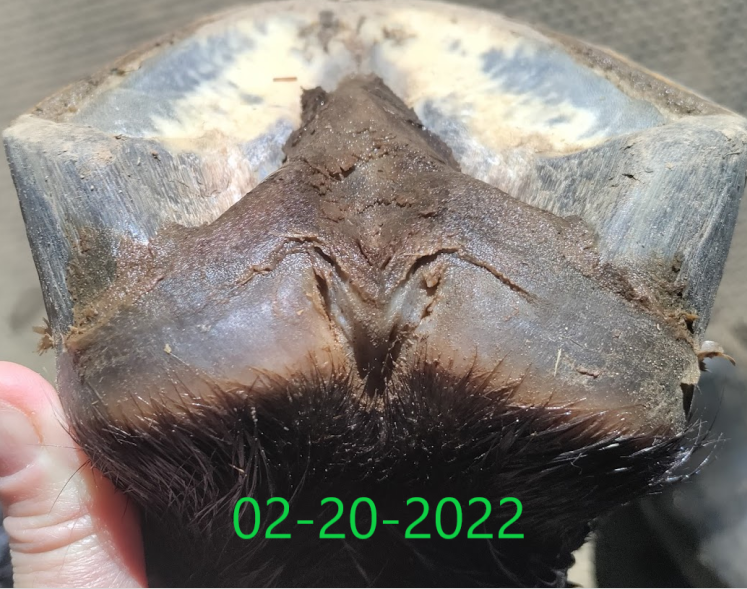

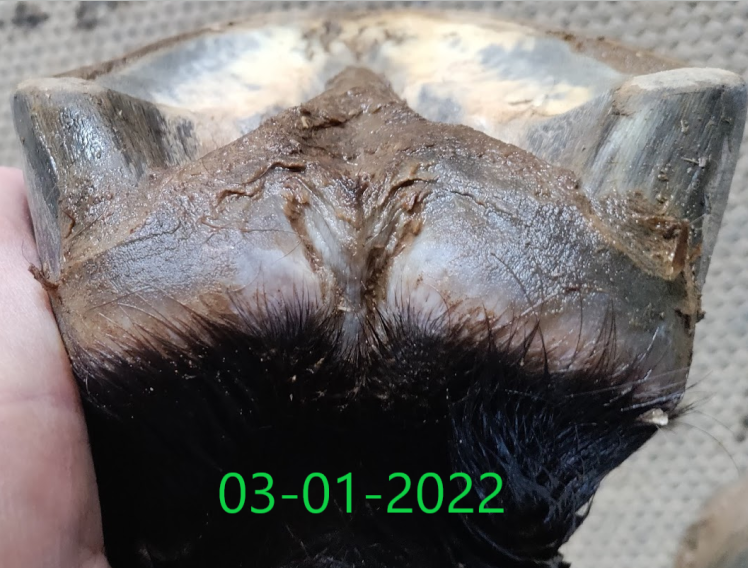
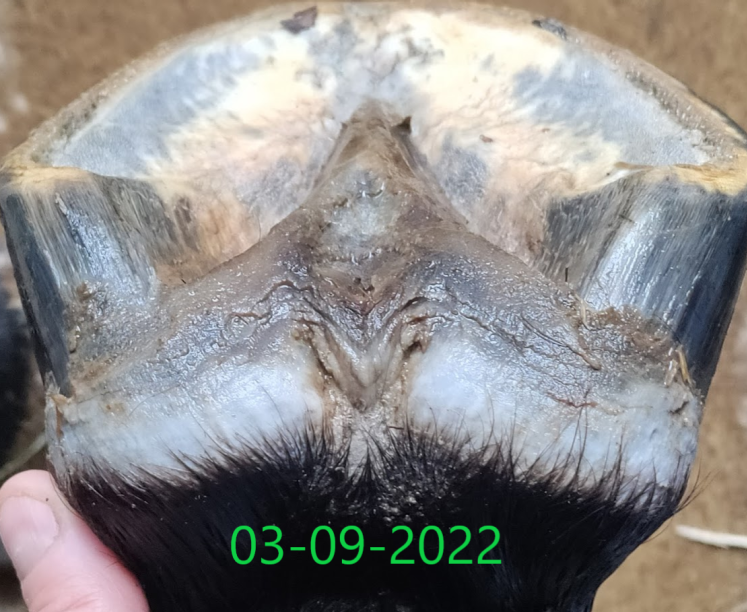

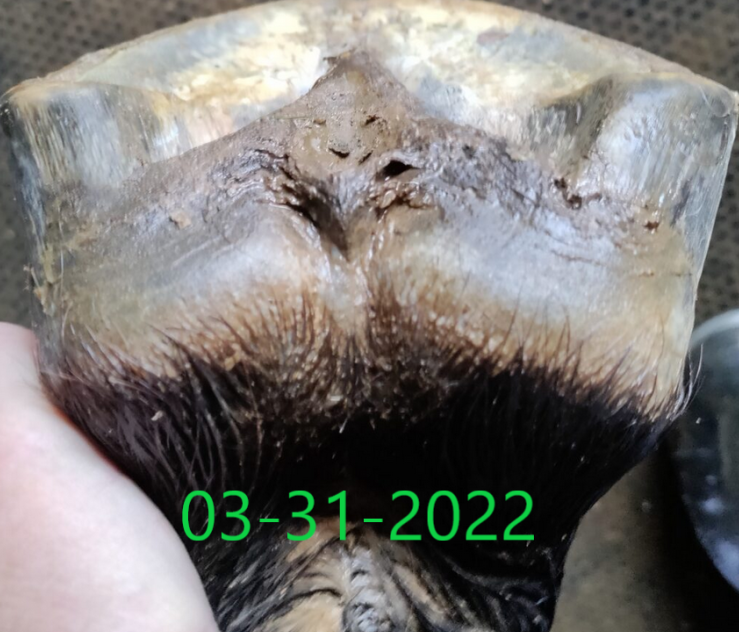
He’s got these back-of-central-sulcus-clefts going on on all his feet at this point. His hinds are bringing up the rear, with his off hind furthest from good, but it’s both interesting and heartening progress.
It’s alarming to think just how small some horses are having their feet trimmed.

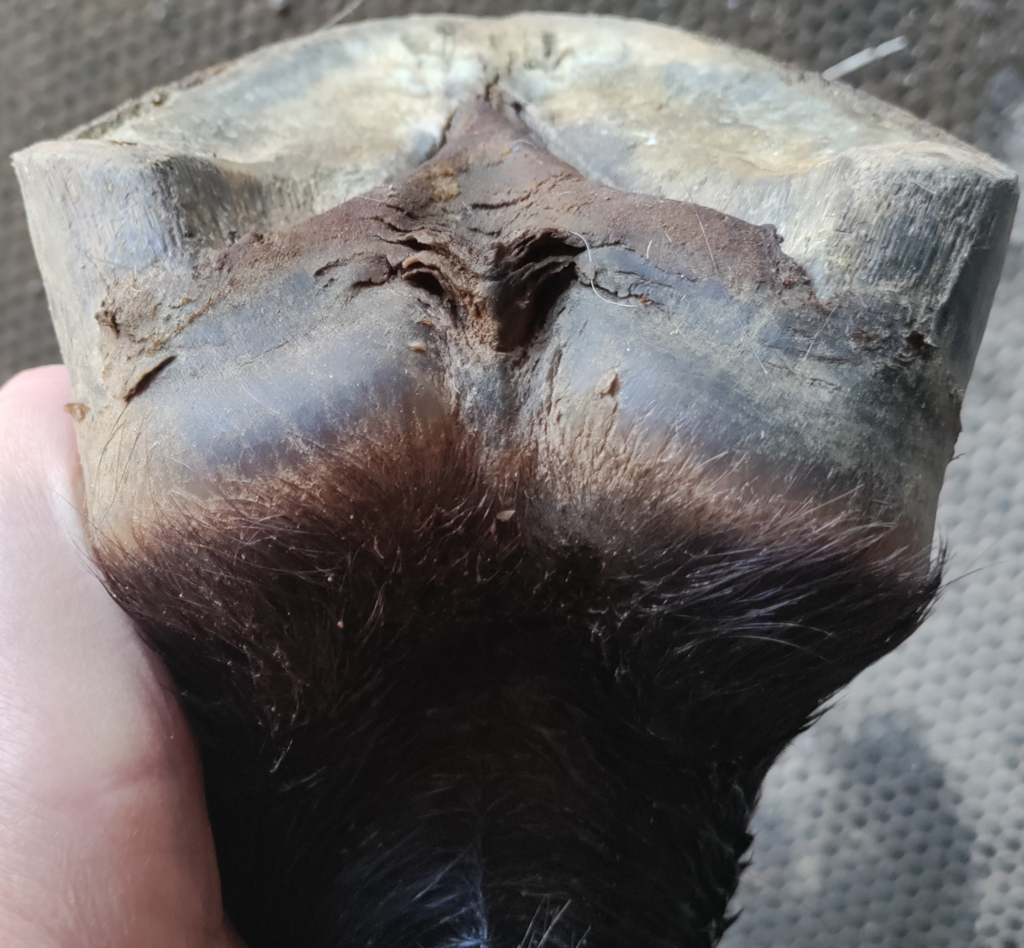
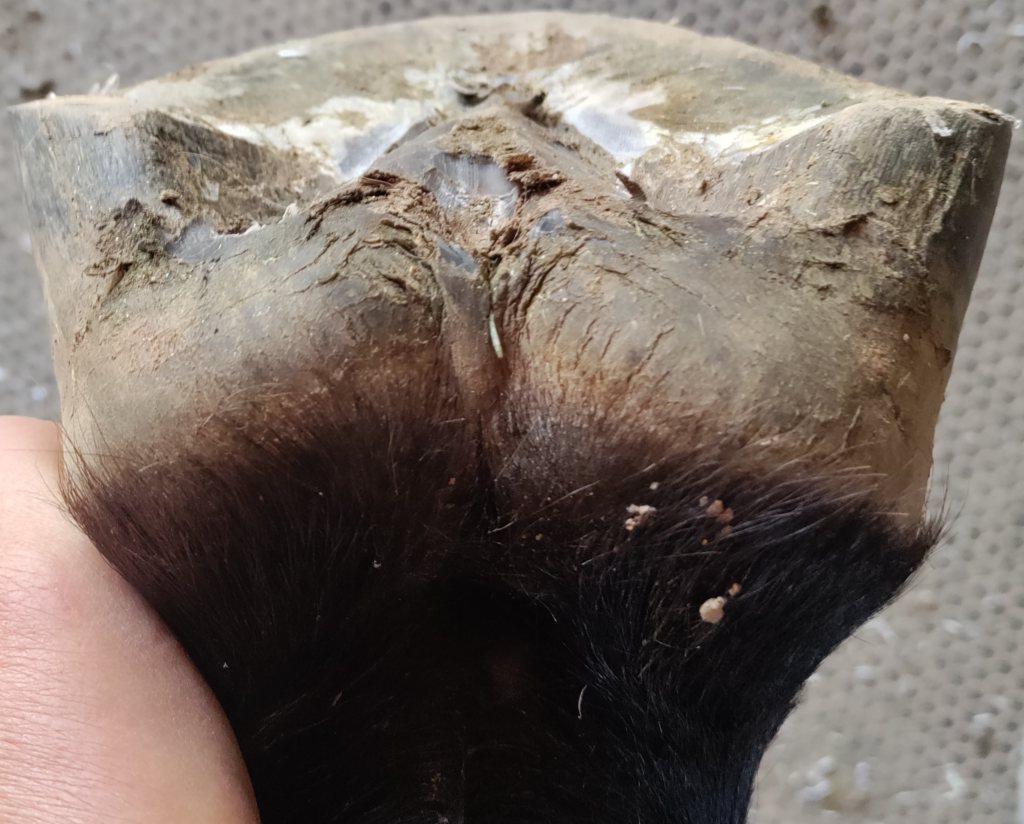
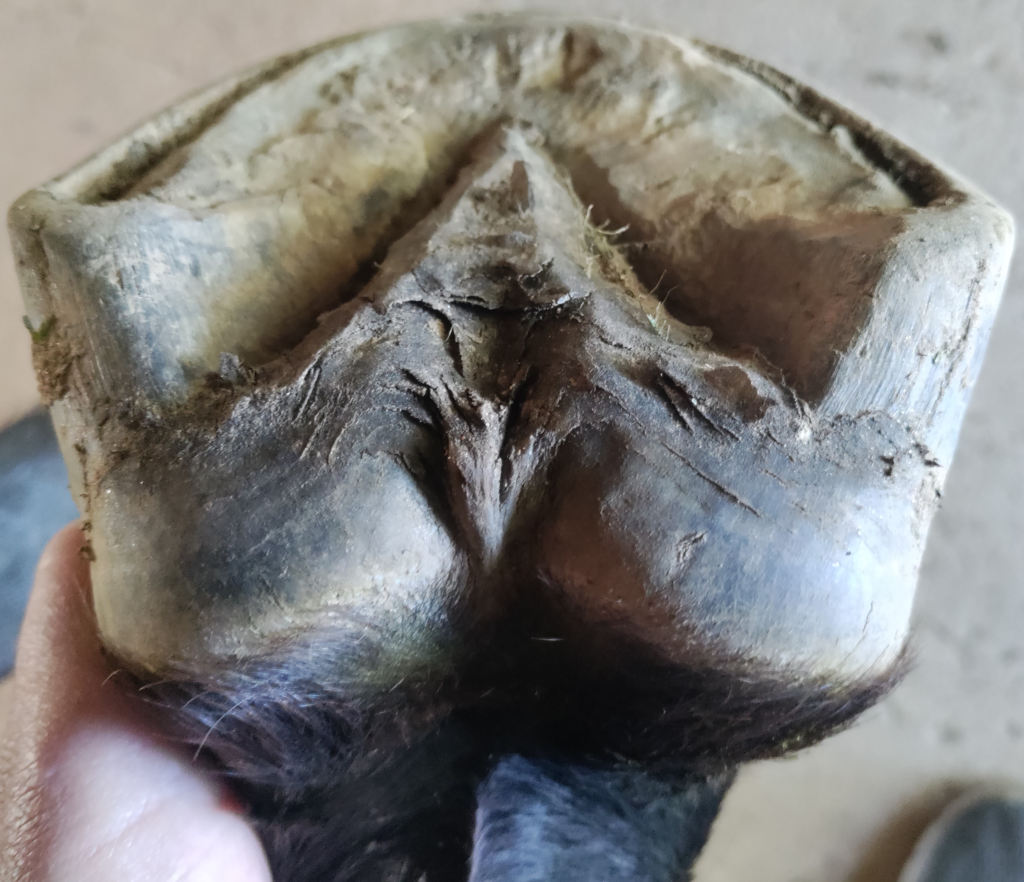

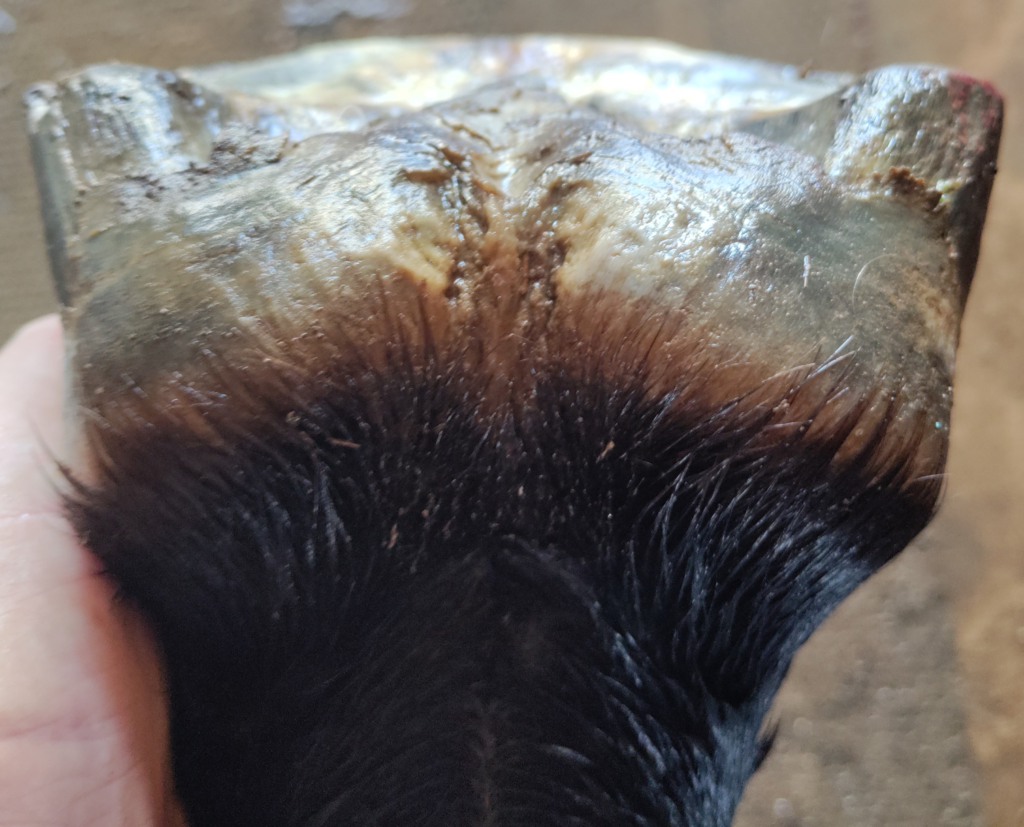
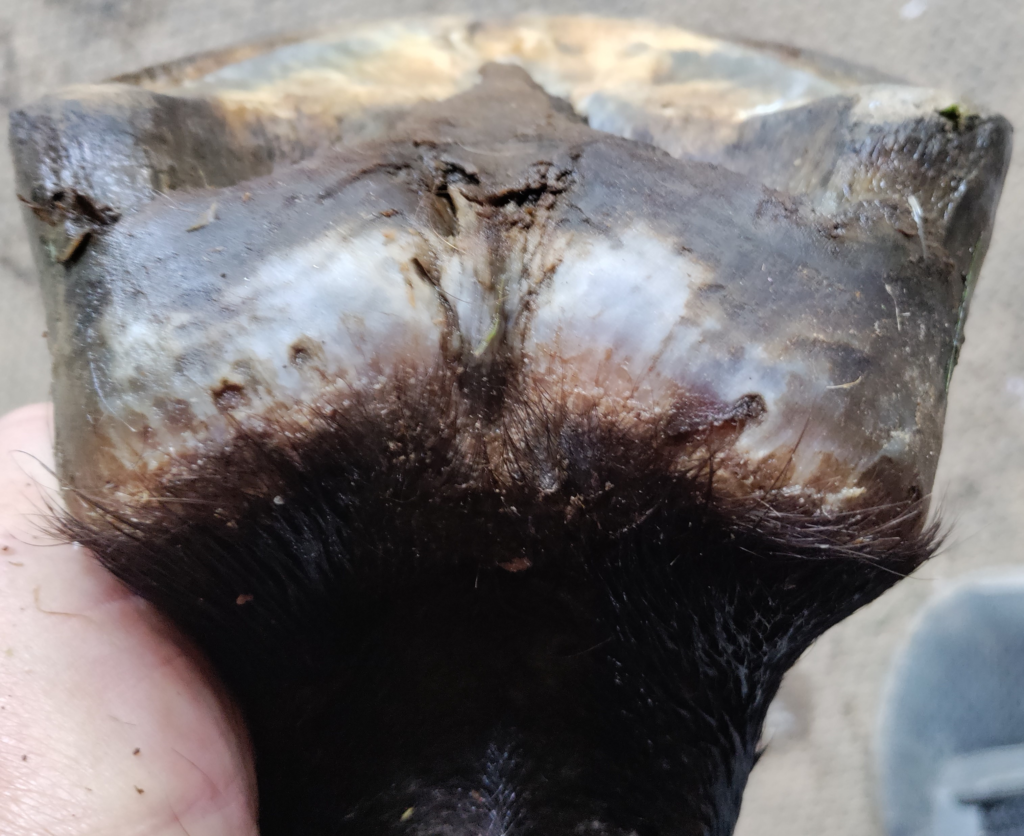



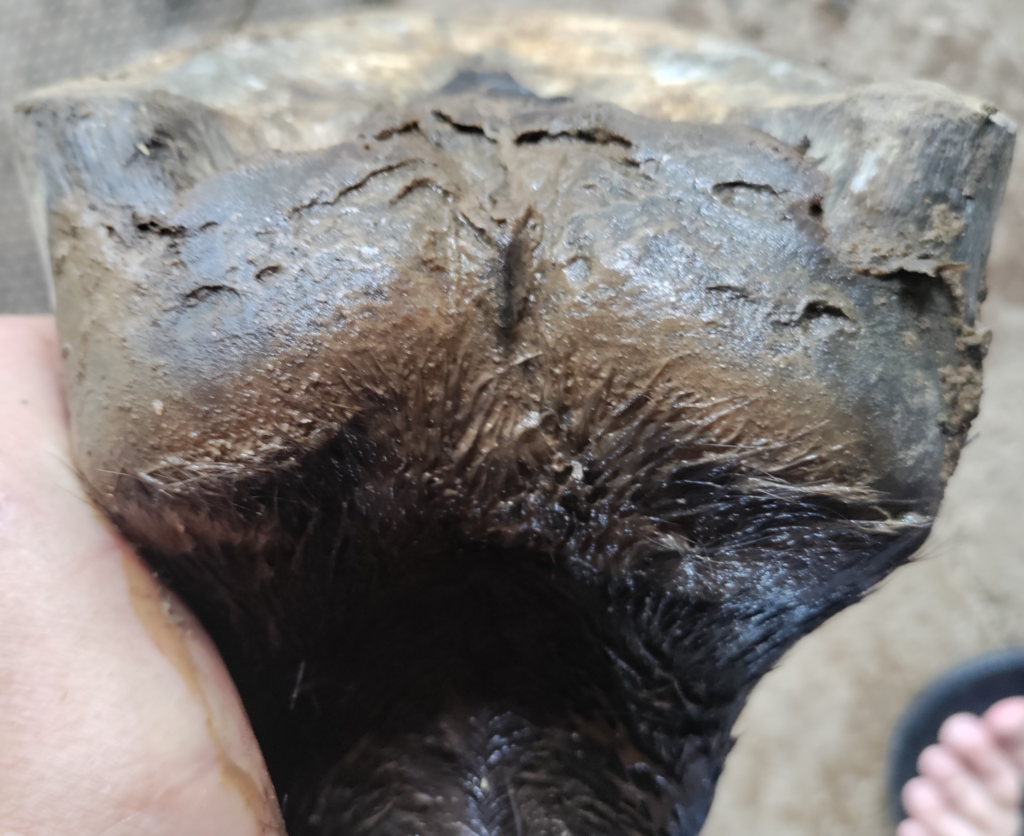

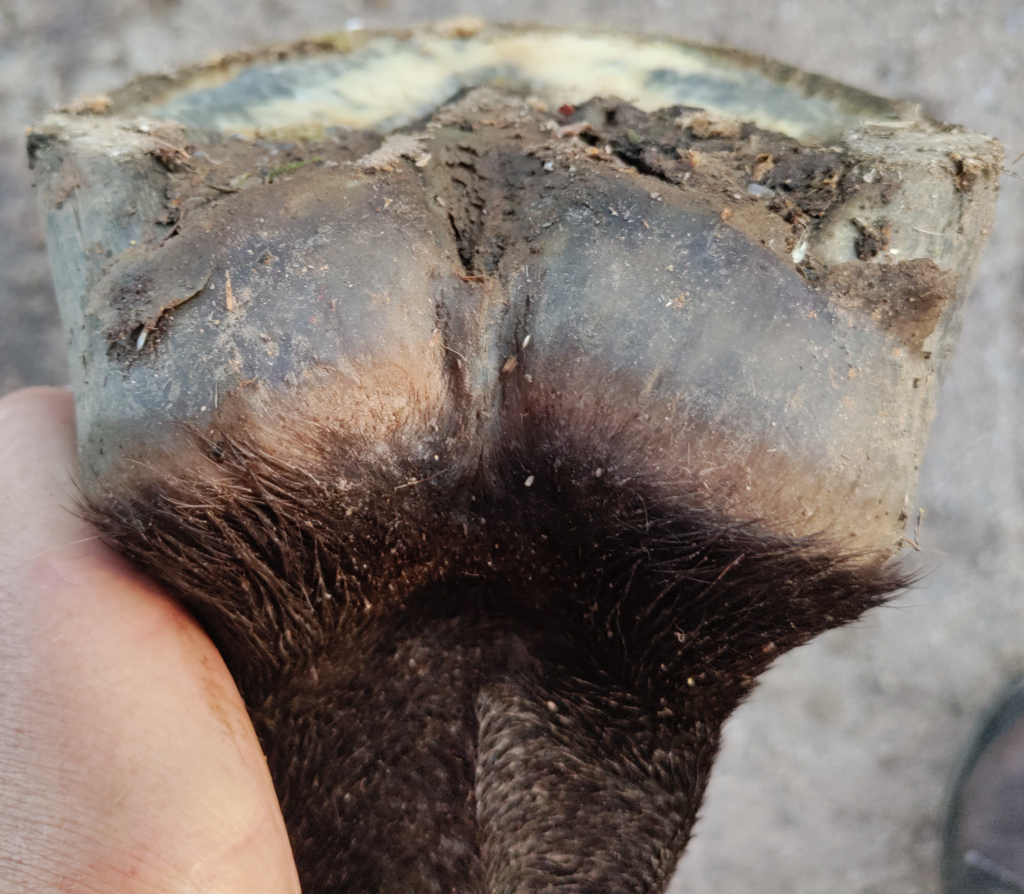
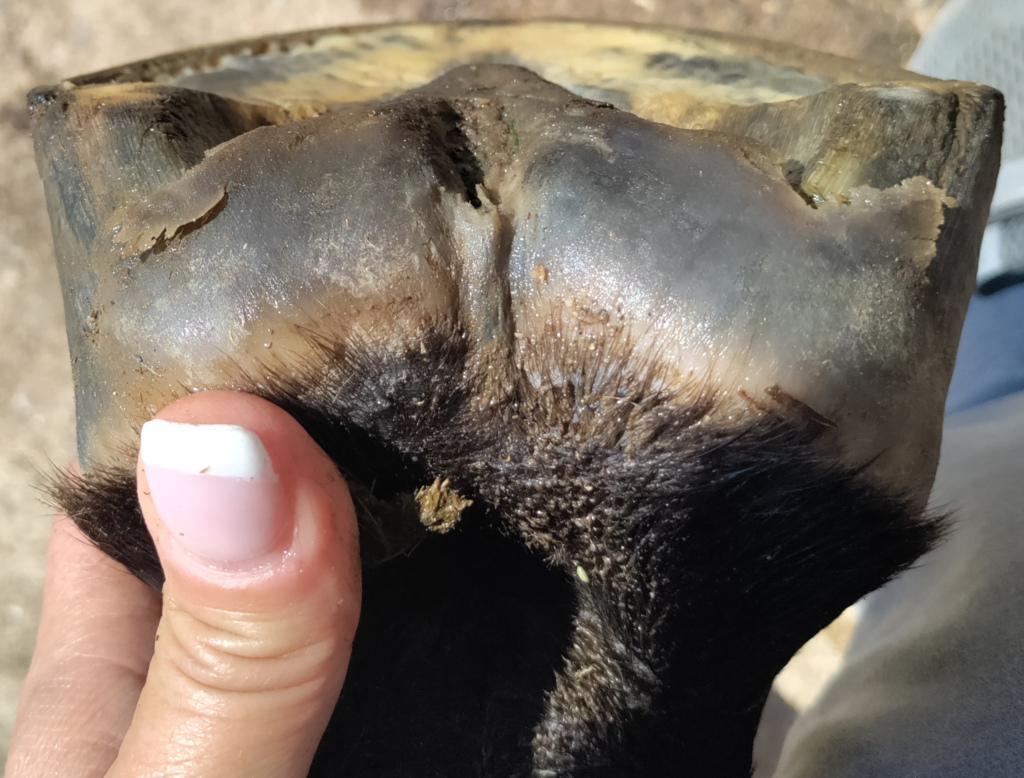
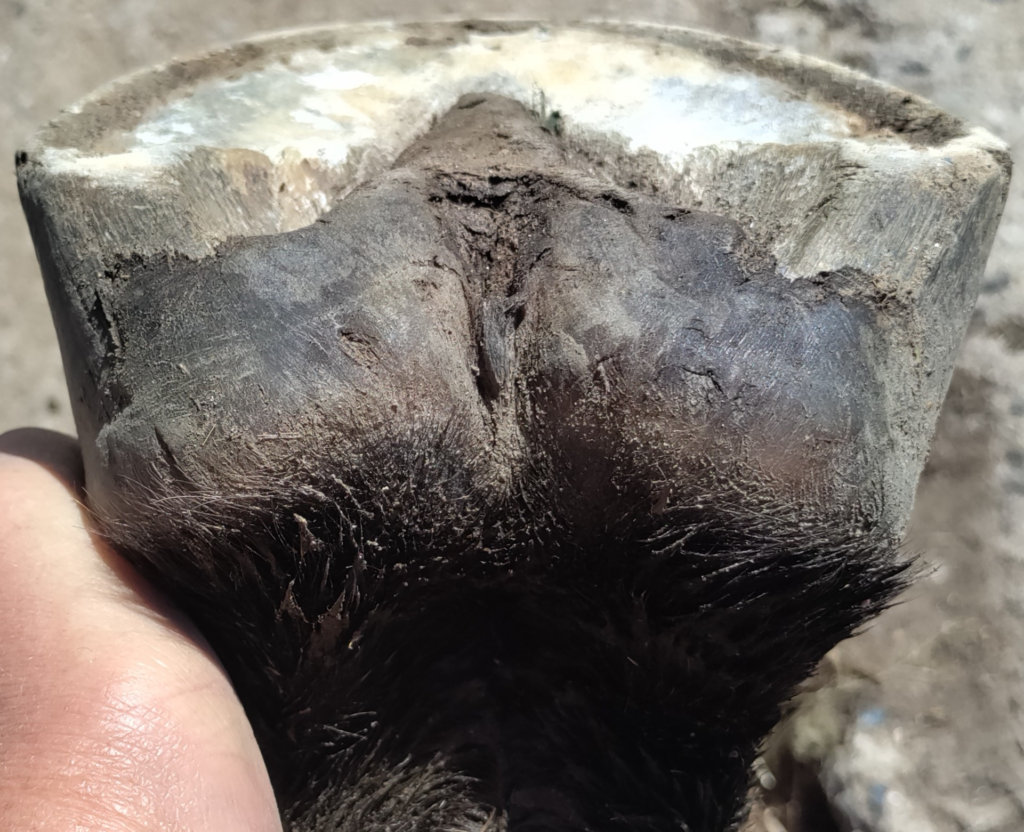

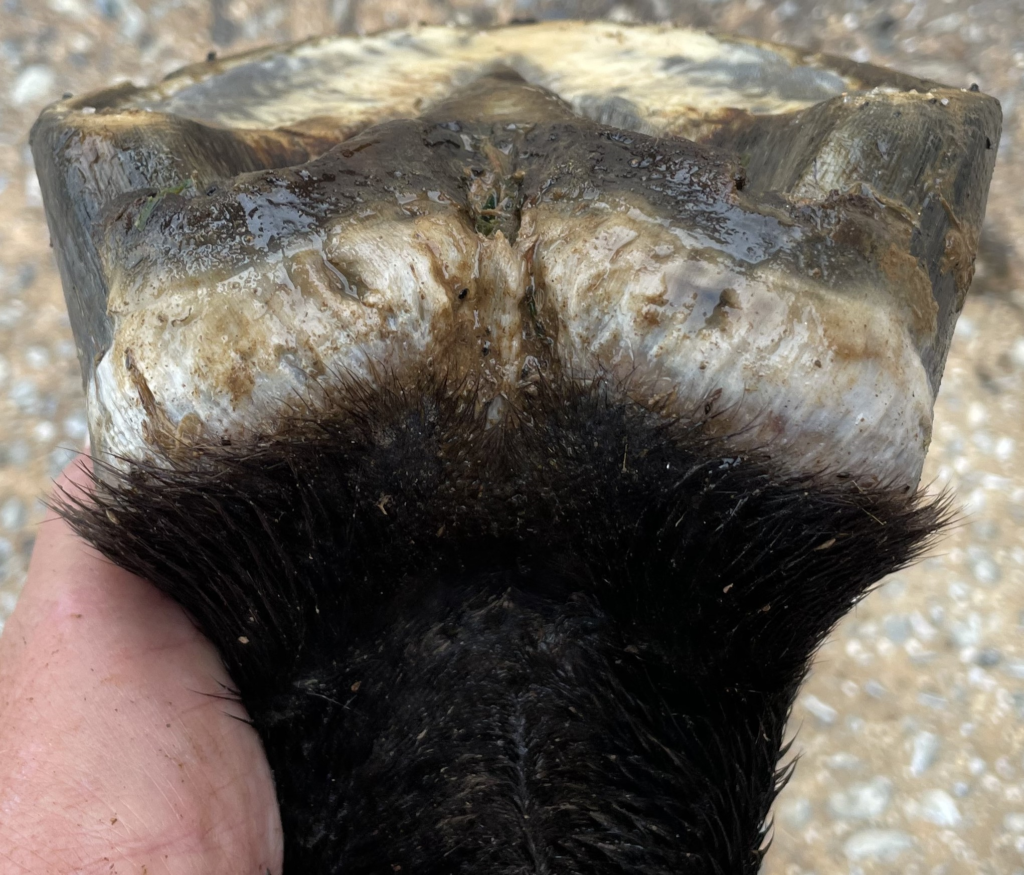
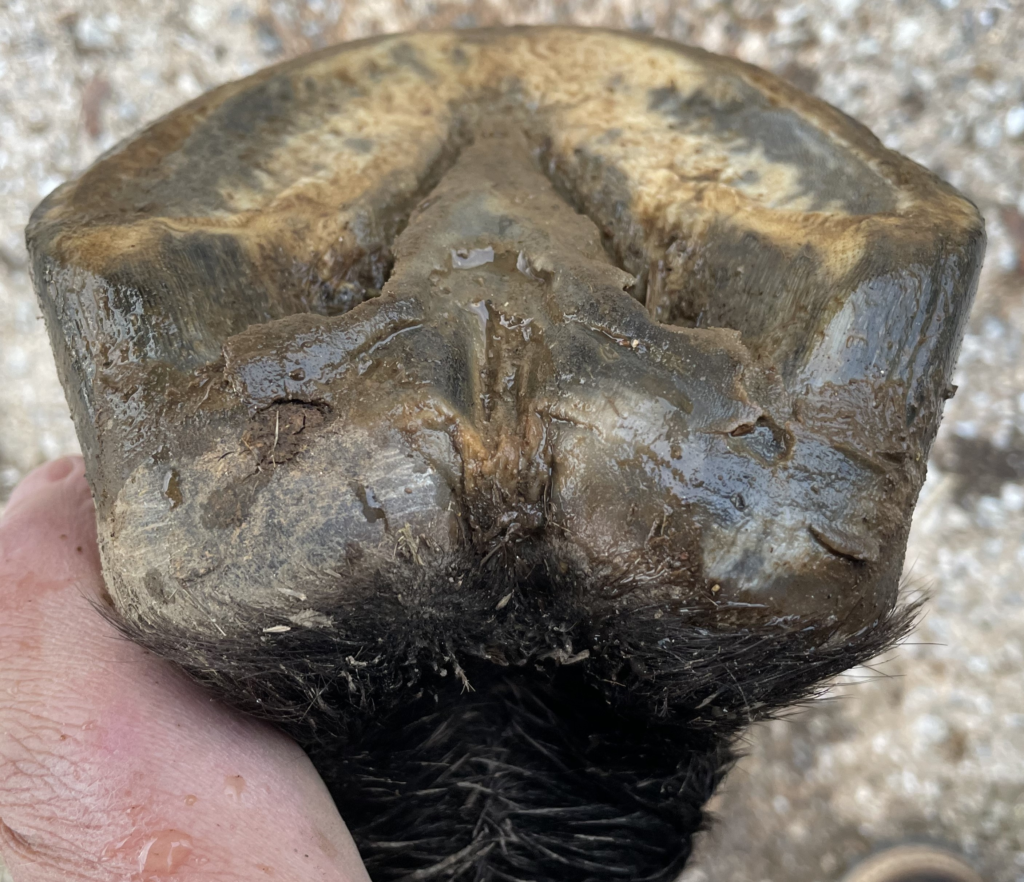
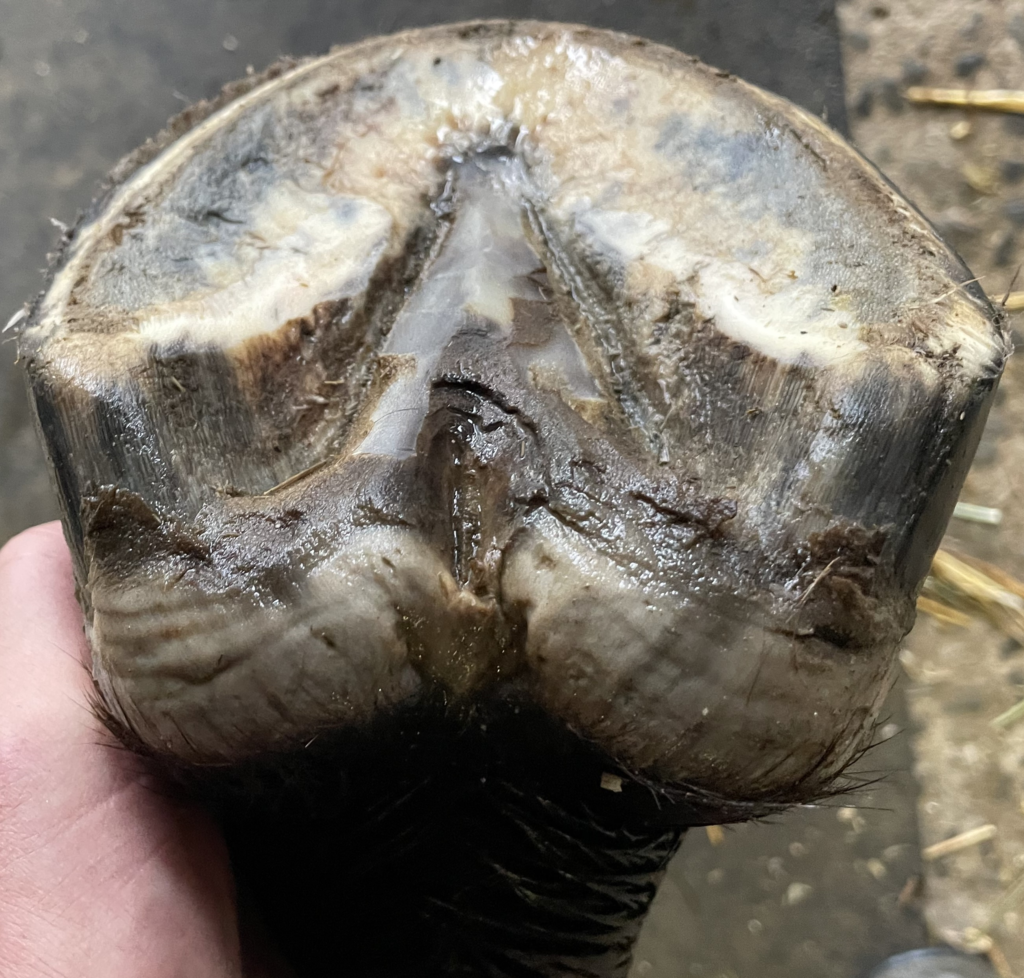




Periople has thinned out considerably since this past September. Central sulcus has deepend and thinned, both from the caudal foot at the hairline growing out.
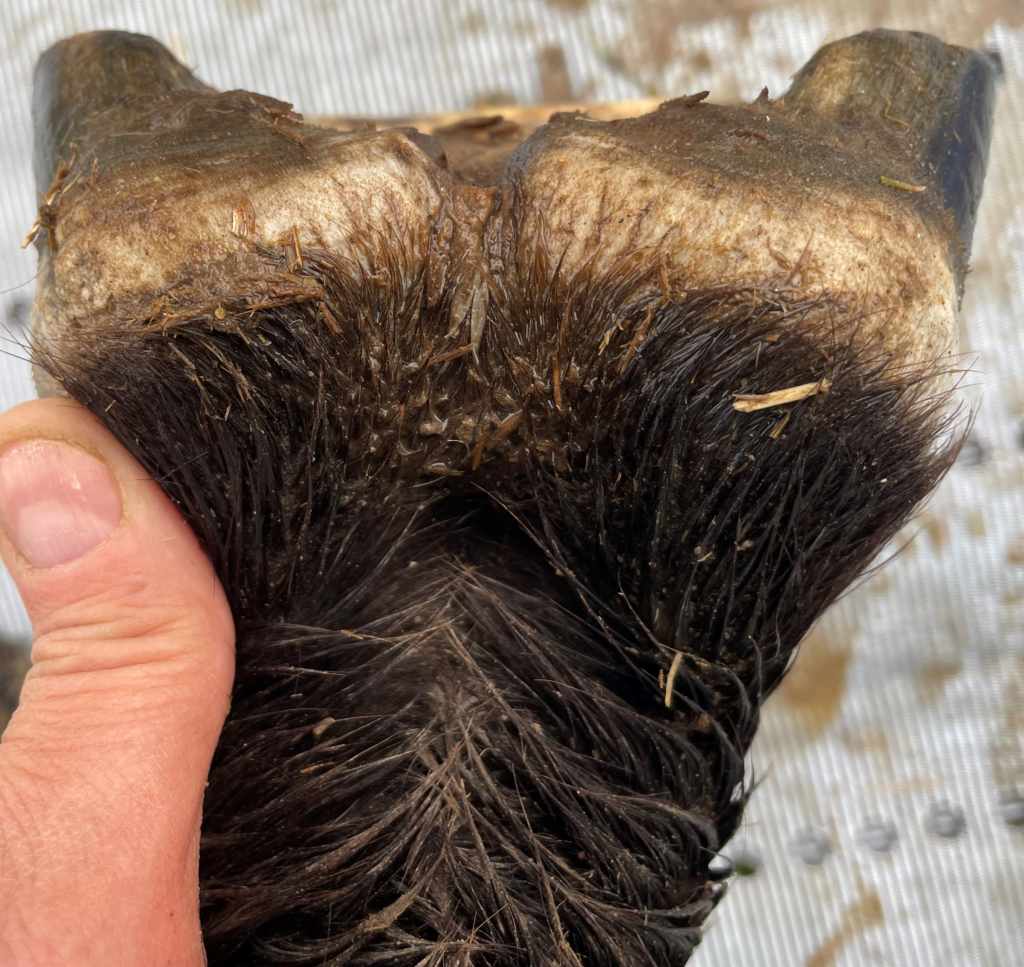
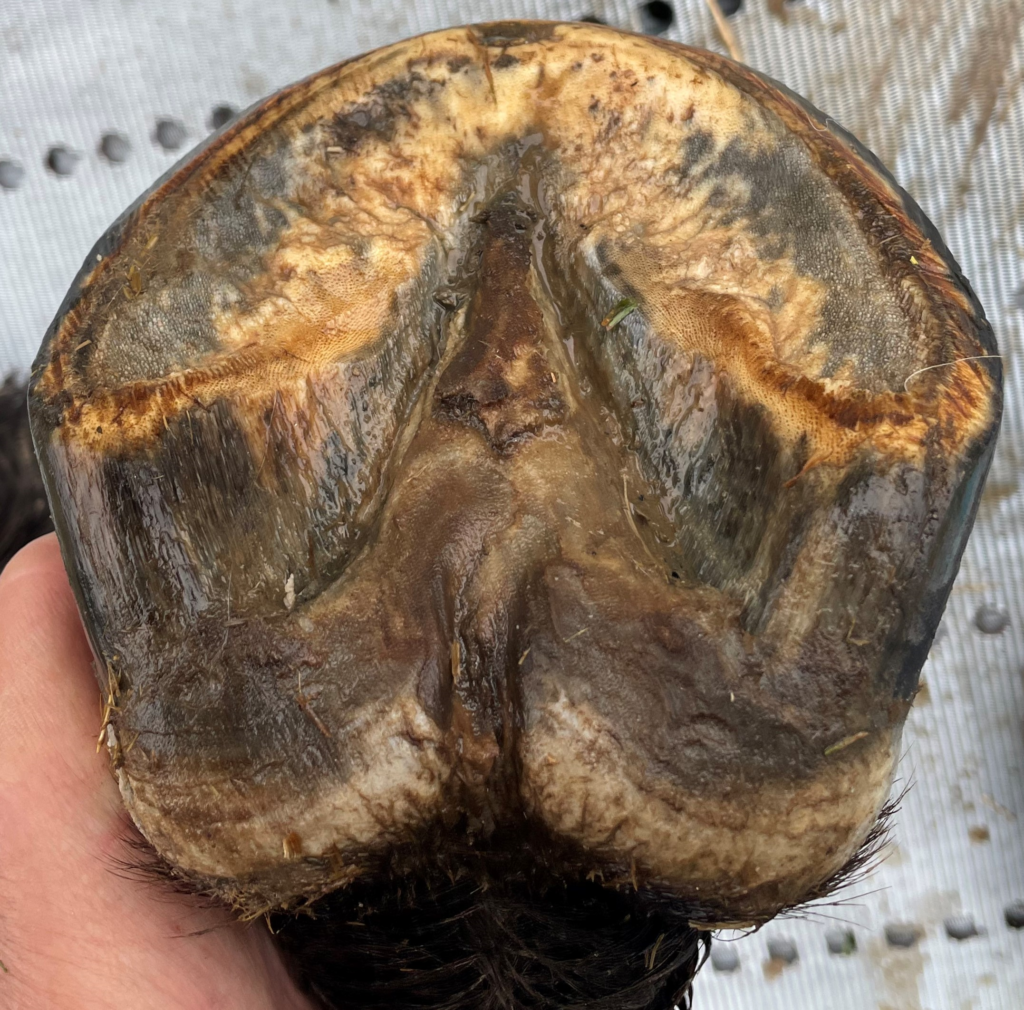
The staining and frog changes here are due to it being “stand around the hay manger in urine soaked hay and poo” season. I’m glad it’s coming to an end. There seems to be chuncks of heel and bar growing in there on his lateral (left of pic). Tubules newly uncovered often first regrow with less pigment at first, and darken up later.

Heels look long, maybe true, but given how drawn forward the caudal
hoof is, as indicated by the shape of the frog, heels are growing down
from where the heel quarter would be in a fully expanded foot. Dropping
these heels would strain the bony column and the system of softer fascia
supporting it.

Quite a crack there on the lateral heel/heel quarter…

Of interest to see how much has fleshed out there were the central sulcus/frog spine is regenerating. Interesting too how the periople gives way when grown out of (at the lateral heel).

Not sure what insult took that medial heel out. Pics like these that make my eye twitch, and have me out addressing balance the next day.

More growth at center caudal… Still has that crumbling medial heel buttress. Check out the fold in the periople where the heel buttress comes through.

And now…expansion there at the back. And if you zoom in on that white bit of buttress growing down from the lateral periople, you’ll see that it’s new growth.
New growth wall often first comes in with little to no pigment. See too how when the periople (on the lateral) thins out during this phase of regrowth that it leaves the heels looking even more high. Granted, this is pre trim, so they are a bit high…on the lateral, anyway.

Poochin out at the central sulcus again. And low the bit of new (unpigmented) buttress continuing to grow down on the lateral.

So clean…


It’s fun too, to watch the hairline change…

Still with the lateral heel buttress growing in un-pigmented.

I feel like that there is a whisper of a naturally open central sulcus…

Still more unpigmented sole there on the lateral. And check out the change in trajectory mid way down the buttress.

There’s a lot more creamy sole coming in…

Wondering here if we’re not about at the end of what has yet to grow out at the central sulcus…

Well, I guess the answer to my wondering is “Not quite yet.” But again, check out the flap there along the inside of the central sulcus. That’s looking like a natural terminus to me. Again, love the water soaked periople shots for added clarity. And appreciate again, in water logged clarity, how much more creamy sole is growing back in.

Bonus sole shot. Again, look at those triangular flaps at the central sulcus. Those aren’t cut out. Those grew that way. I’m pleased as punch with the improvements in these feet. Everything’s improved. Not 100%. I’m not sure if 100% is achievable given how early he was shod and how bad his feet were. Time will tell…



